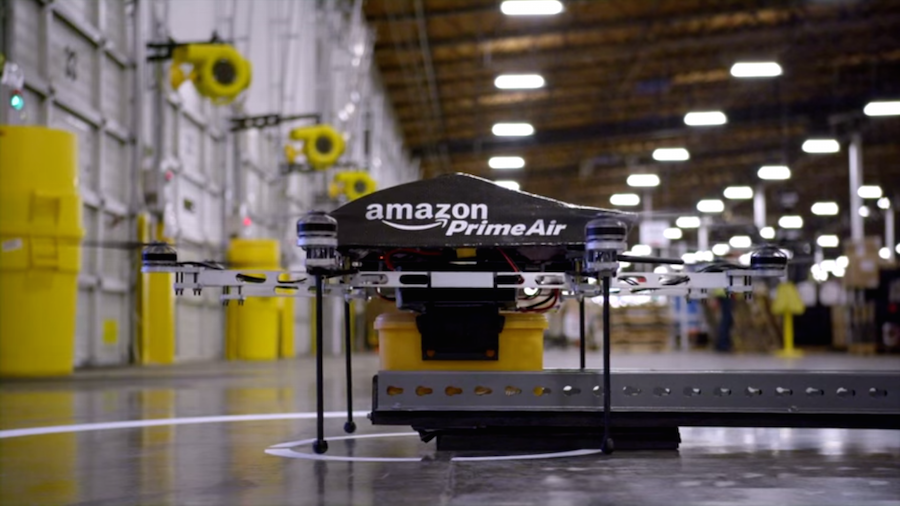Drones: Commercially viable?
Did you ever think that a drone could track you down to drop off the latest issue of your favourite comic? It might be possible now. According to a patent released by US Patent Office, drones will be able to “receive information and a destination location and autonomously . . . deliver the inventory.”
The patent does not necessarily mean that these drones will become a reality, or that they will be available for commercial purposes. However, it does mean that the movement to make drones commercially available will be pushed unapologetically by Amazon. This patent means that the Federal Aviation Authority (FAA) will be pushed to look into drone development, following countries such as the UK, which will build a drone research center in London.
Up to now, Amazon has been testing its drones in Canada, where airspace regulations are more relaxed. However, in March, the FAA relaxed its regulations, but insisted that drones always fly within the pilot’s line of sight, and at a height of 400ft (122m). Now, with the patent accepted, the FAA says it will look into commercial drones that fly beyond an operator’s line of sight for inspecting railways.
Amazon is eager to get drones flying, and soon. In a seven-page letter to the FAA, also posted on the Amazon website, the company details the stringent safety regulations it will follow. The letter outlines why relaxing regulations benefits both Amazon and the US government. “Amazon shares Congress’s goal of getting small aerial vehicles . . . flying commercially in the United States safely and soon. The Congress directed the FAA ‘to safely accelerate the integration of civil unmanned aircraft systems’ [and] gave the FAA power to grant innovators ‘expedited operational authorization’ to do so. By this petition, Amazon is seeking its first such authorization, in order to conduct additional research and development for Prime Air.”
More personalized delivery systems are becoming the norm in the industry, with Amazon saying, “One day, seeing Prime Air vehicles will be as normal as seeing mail trucks on the road.” Last month, Audi announced that it would be partnering with Amazon and DHL for package delivery to the trunks of its cars. The “car-boot delivery system” will be tested in Munich this month.
But what does all this mean for Amazon customers? According to a video by Amazon titled “Amazon Prime Air” on YouTube, if drones are developed for consumer use, then those who order from Amazon (at least in the US and Canada) will be able to receive their deliveries in half an hour or less. The 15 million or so views on the video demonstrate that many are interested in drones and their development.
However, drones can be used for both good and bad. Several point this out in the YouTube comments of the abovementioned video, with one viewer astutely pointing out that “using drones for commercial purposes is illegal in America. However, using them to kill people with impunity is totally justified?” Another asks, “What’s preventing the NSA from hijacking these things and turning them into spying devices?”
We can all agree that although the prospect of drones is exciting, there are some issues that need to be ironed out before drones can be used for commercial purposes.
Sources: BBC, Amazon, US Patent and Trademark Office

This is Anoushka’s second and final year in The Talon. She still does not know how to write a biography and would probably ‘google’ it if she knew...











